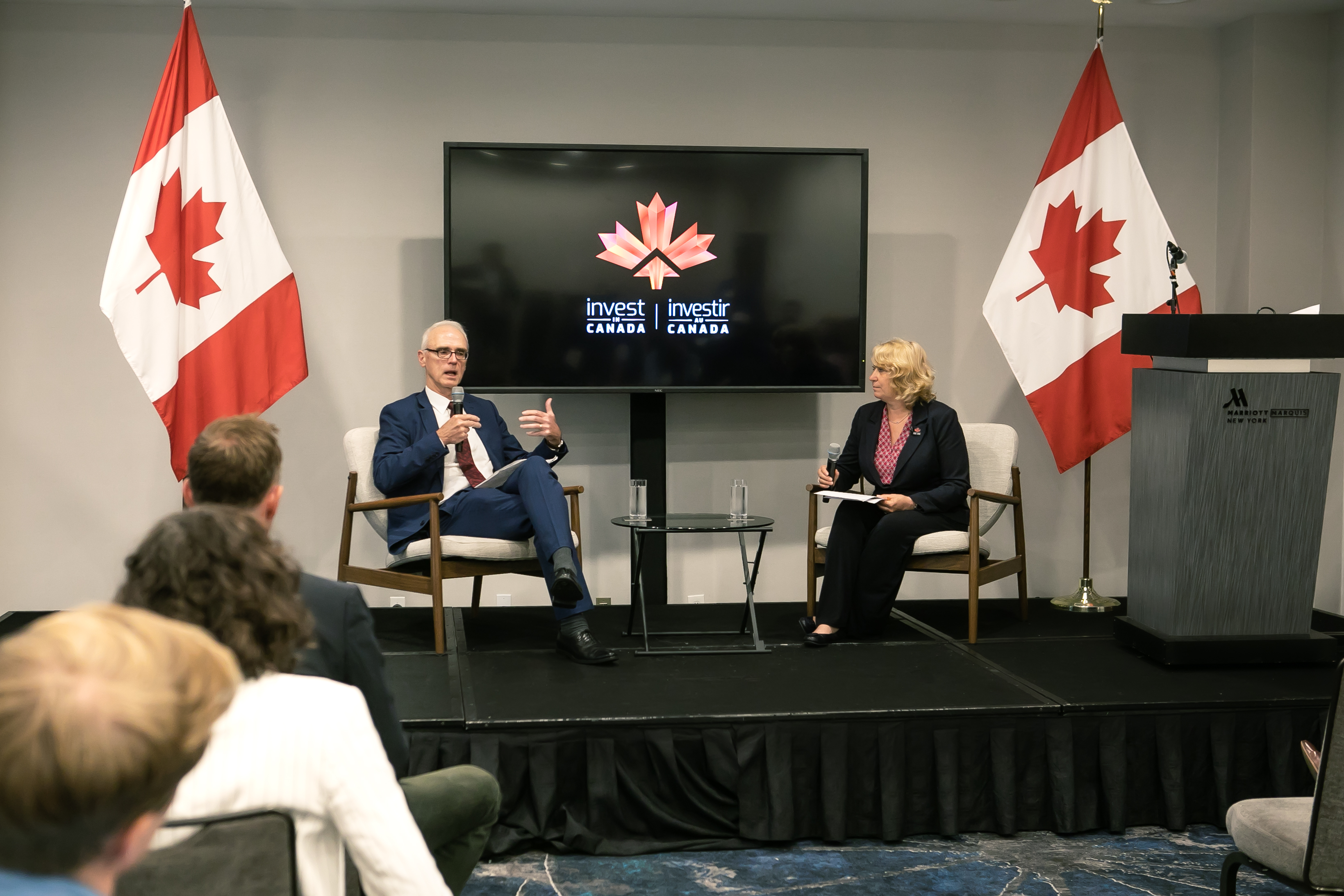Food for thought: The future of alternative protein investment is in Canada
These days, the traditional wheat fields that make up the “breadbasket of Canada” – the Canadian Prairies – are more likely to be sharing space with another crop: pulses.
“Increasingly, it’s not a breadbasket. I’d call it a bean pot. It’s more about a wider range,” agribusiness industry expert Rory McAlpine conveyed during an event at Future Food-Tech Alternative Proteins in New York City recently, hosted by Invest in Canada.
Wheat is still a large crop, especially in western Canada, but pulses are growing in size and significance. Now accounting for millions of acres of cropland in Canada, pulses are a big contributor to Canada’s agricultural revenues. Mr. McAlpine, who has worked in senior agricultural roles in both the private and public sector in Canada, knows firsthand the very positive economic benefits created by this diversity into pulse crops.
Pulses – the dry, edible seeds that include beans, peas, and lentils from the legume family – are a foundational crop for the rapidly expanding plant protein industry. And Canada is the world’s largest exporter of pulses. Pulses are leading the way toward future food that is healthy, delicious and sustainably produced.
At the Future Food-Tech Alternative Proteins Summit, held June 27–28 this year in the heart of Manhattan, Mr. McAlpine joined Invest in Canada CEO Laurel Broten to dig deeper into the alternative protein advantages that are making Canada a preferred location for future-looking agri-food investors globally.
How Canada has achieved 39% of global market share in pulses
Asked by Ms. Broten to explain how Canada has been able to lead the world in pulse exports, Mr. McAlpine described sustainability as one of the reasons.
“Adding pulse crops has created a real sustainability benefit,” Mr. McAlpine said, pointing to the climate resilience of pulses. He also addressed how pulse crops improve carbon sequestration: “When you talk specifically about climate change, there’s some really great new data actually measuring on a life-cycle analysis basis, what is the carbon sequestration of specific pulse crops in Canada.”
“Pulse Canada has done this work and it’s pretty cool. They can calculate a carbon-negative number associated with key pulse crops in Canada and equate that to so many million cars taken off the road. And that’s based on real hard data – actual production data on specific farms in various commodities in Canada.”
Canada’s labour force advantages
Harvesting the right crops is vital for industry prosperity and environmental sustainability, but there is an even more important component opening up value-added agriculture opportunities. “In many ways we talk about this as all about ‘What are the critical ingredients for the future?’” said Mr. McAlpine. “Well, the single biggest ingredient, actually, is people. The workforce, the talent pool built off that history of agrifood and science and innovation is extremely important.”
In response to Ms. Broten inquiring about labour force challenges, Mr. McAlpine acknowledged that labour shortages are global, but Canada has a dual advantage: strong population growth along with high-quality education to fill all the different types of positions the industry needs.
“What’s important in this space to remember: it’s not just about high-skilled,” Mr. McAlpine said. “It’s about semi-skilled, low-skilled too. If you’re going to have a value chain approach and need the labour at all stages, you need all three.”
In addition to an educational system that the OECD ranks the best in the world in terms of tertiary education, Canada is also seeing the highest population growth among G7 countries. “In one year, one million new Canadians,” Mr. McAlpine said. “The rate of immigration is, frankly, extraordinary…. The attractiveness of Canada to the global talent pool is unquestioned.”

Bold goals for an exciting future
Canada will be needing the right labour force to achieve some ambitious objectives for growing its alternative proteins sector: Canada aims to supply 10% of the world’s plant-based foods by 2035. Ms. Broten asked Mr. McAlpine what Canada’s research, innovation, commercialization and capital financing ecosystem is doing to make this possible.
“To me it’s about a whole supply chain firstly,” responded Mr. McAlpine. “And expertise and resource competence, if you will. Everything from the plant breeding to the cropping – the farming of the plant-based crops – through to the technologies around primary processing. Through to further manufacturing and food formulation. To, ultimately, food manufacturing and marketing. Canada has been in this game in food as a major net global food exporter for a very long time.”
Who is investing? Who else should invest?
Just as the industry in Canada has become more focused on the importance of value-added agriculture, companies that have invested – and others that will come to Canada to invest – appreciate the advantages for adding value that Canada offers.
A case in point is Roquette, a France-based company that expanded to Canada and has built the world’s largest pea-processing plant, in Manitoba. As Mr. McAlpine pointed out, “They saw something that hopefully everyone can now see: the opportunity is real.”
There is no time like the present to build on Canada’s agricultural past. It’s a past that has helped create today’s strong supply chain and unparalleled innovation ecosystem.
The time is right for forward-looking companies globally to create their own exciting future of nutritious, delicious, accessible and sustainable food in Canada.
To learn more about opportunities in Canada’s alternative proteins, please contact us.